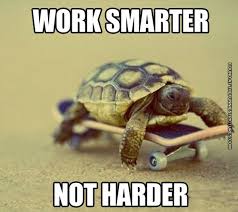
anonymous / January 27, 2015
About six months ago I made the decision to attempt the selection program for a particular military Special Operations program that requires a daunting amount of swimming.
Prior to this decision I had never in my life been taught proper swim technique. Despite the lack of lessons, I considered myself a “strong” swimmer over short distances due to my growing up surfing, sailing, and generally spending a lot of time in the ocean without issue. I figured that as someone who can run a sub-five minute mile, I wouldn’t have any issue building up to the minimum swim requirements. Let’s just say that my first weeks in the pool were ultimately disappointing, but more on that later.
For the entrance exam into this selection program, I have to swim 500m using the combat side stroke (CSS), the military’s variation of the traditional side stroke, altered to optimize for energy efficiency and silence. Although the entrance exam requires a 500m CSS time trial, throughout the first 9-week phase of the selection program, I will be expected to swim thousands of meters every day. Therefore, the 500m CSS time trial needs to be a walk in the park by the time I get there.
In addition to the CSS, I will also be swimming freestyle for long distances and during “water confidence” drills. My plan from the outset was to build my endurance using freestyle all while integrating drills to learn the CSS. I figured, work hard with freestyle and work smart by learning the CSS bit by bit. What I discovered the first week was that I couldn’t even swim 50m freestyle without taking a break. It was disheartening. I gave it a few more weeks, and still the progress was disappointing. I thought that watching videos online and buying swim guides would be enough for me to critique my own form and improve by just hitting the pool hard. I was wrong. I floundered.
So I finally decided to take lessons at MSS. One of the greatest things about my experience at MSS taking lessons the personal investment in my improvement from the coaches. I was able to swap around my schedule to find the right coach and group dynamic. The first few coaches that worked with me transformed my freestyle stroke and probably more importantly my breathing technique. After a few weeks, my freestyle 500m had gone from impossible, to 15 minutes, to sub 10 minutes. It was the progress I was hoping for, although I still had plenty of room for improvement.
It was at this point that the coaches also put me in touch with coach Steve Marra, who is experienced in the combat side stroke. His guidance on the CSS technique, freestyle technique, underwater swimming technique, and water confidence drills has been monumental in my progress. I supplemented the advice I got from the coaches reading and watching material from Stew Smith for the CSS and from Terry Laughlin on efficient freestyle technique for long distance swimming.
The lesson there is that there is always more you can learn, even if you’re not in the pool. The online materials will never come close to replacing a live coach, but they can still be beneficial. Now that I’m hitting the times I want and have built some confidence in the pool, I can reflect back on some lessons learned, and hopefully anyone else just starting out at MSS can take something out of this:
TAKEAWAYS FROM A NOVICE:
1. In my novice experience, swimming, at least for me, is 90% form, 10% conditioning.
2. Nothing can replace a live coach.
3. If you’ve never taken swim lessons, do it. They pay for themselves in time and frustration saved.
4. If you hit a wall in your progress, have someone look at your form – you may find that the smallest adjustment will bump you up a level.
5. Don’t get frustrated or discouraged, you will get better if you stay disciplined.
6. Swimming is about efficiency moving through the water. Do less to go faster and longer.
7. Sometimes working smarter, not harder, is the key to improvement.

